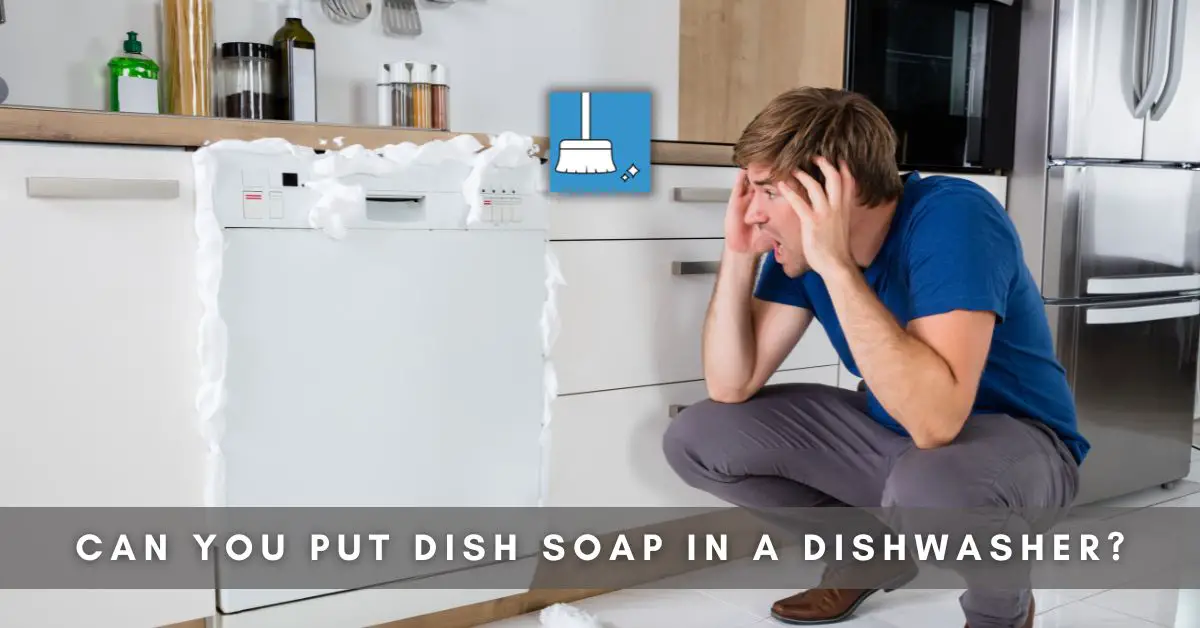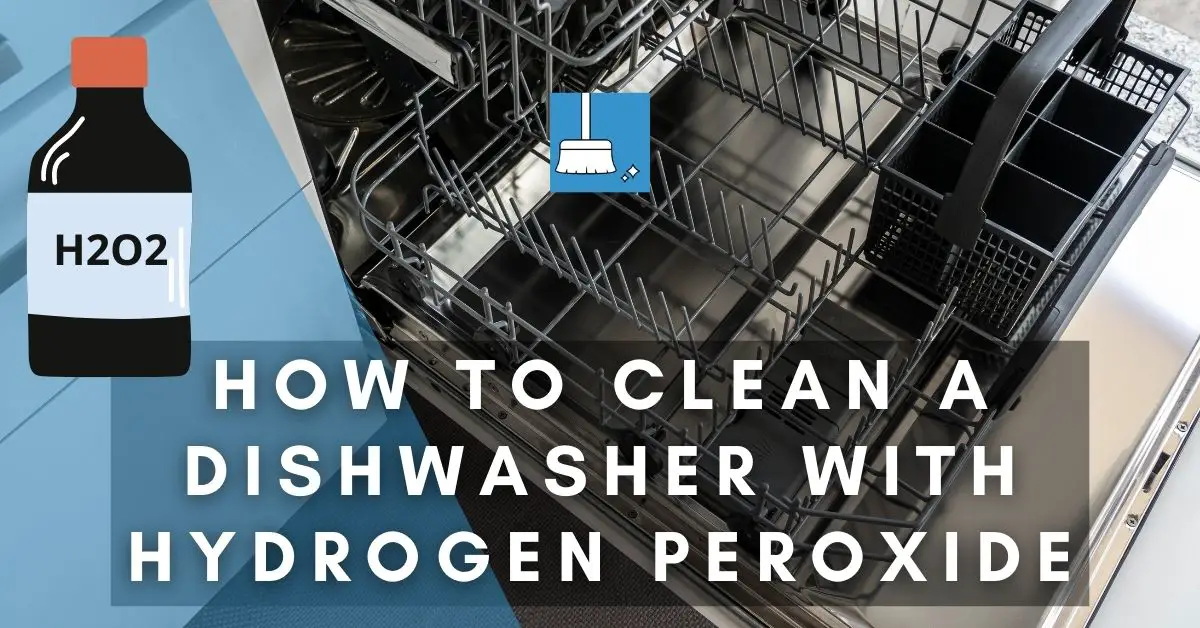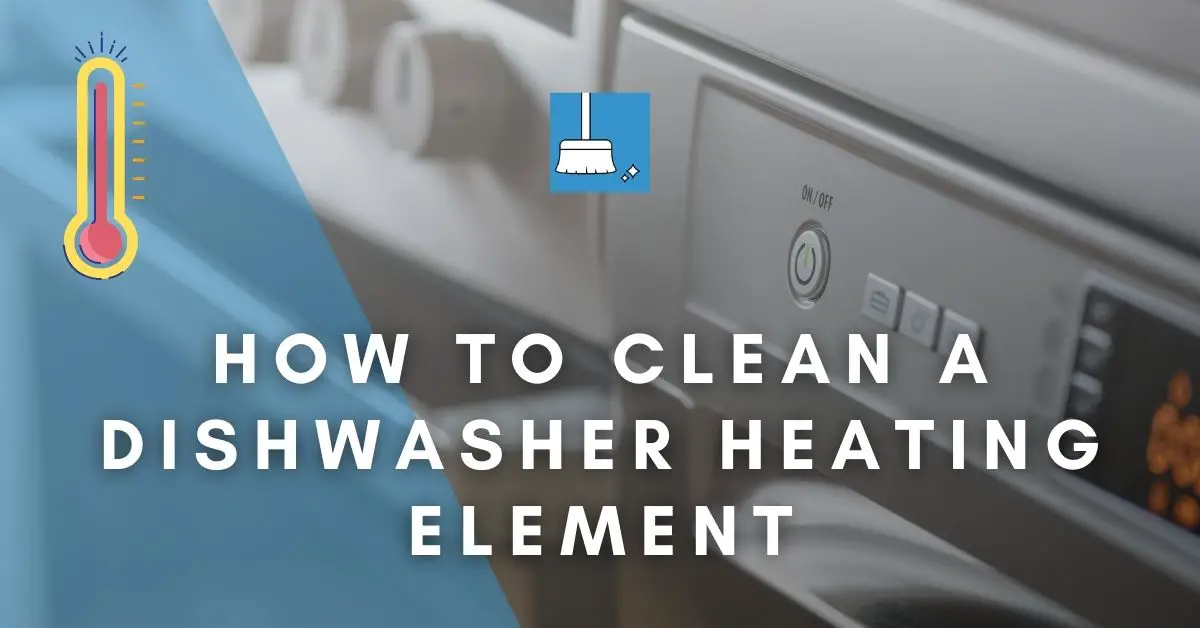Although Liquid dishwasher detergent was popular years ago and still can be purchased from the market, it doesn’t mean that any detergent or soap in the form of liquid can be used in dishwashers.
People get tempted to use the regular dish soap in a dishwasher because it is cheaper than buying a dishwasher detergent. At other times, you might just not have anything at hand to wash those piled-up dishes and you desperately need to use dish soap. Some people even think that dishwasher detergent stays on dishes and they want to use something else.
This article discusses if this can be done. If yes, then how and safer alternatives to this approach.
Can You Put Dish Soap in a Dishwasher?
Dish soap should not be used to clean dishes in a dishwasher as this will produce suds that will fill the dishwasher up, overflow out of the door onto the floor, and also flood the kitchen sink.
These suds not only create a mess in the kitchen that you need to clean up but can also damage the kitchen floor (especially hardwood), cabinets, and electrical fittings.
These Soaps Will Also Flood Your Dishwasher!
• Shampoo
• Hand soap
• Body wash
• Car-washing liquid
• Pressure washer solution
Why Do Dish Soaps Produce So Much Foam?
Dishwashing soap bubbles and produces so much suds because the manufacturers use foaming agents in these soaps. Some of these foaming agents are ammonium lauryl sulfate and sodium dodecyl sulphate.
Manufacturers use this trick to give you a sense of cleaner dishes after seeing a foam-filled sink. It is more of a psychological incentive.
But these agents also work as surfactants to reduce the surface tension of water. This reduction in surface tension of water breaks down oil and grease and washes away the dirt from the dishes.
Dishwasher Detergent vs. Dish Soap (The Working)!
Just like the process of digestion, dishwasher detergent uses 2 enzymes: protease and amylase, to digest protein and starch, respectively. The enzymes break down the food into finer pieces which are then rinsed away with other mess on your dishes. Older dishwashers use Phosphates to do almost the same thing. (Source)
In any case, all this happens without producing too many suds.
Dish soap is designed to produce bubbles when it mixes with water. A fine layer of water is pressed in between two opposite ends of molecules. Resultantly, a film is produced with air. This film is a bubble. Too many of them create suds. (Source)
However, even dishwasher detergent (if used more than recommended amount) can create a lot of suds and even block drain pipes.
Clean That Dish-Soap-Dishwasher-Mess!
STEP 1: As soon as you notice suds filling your dishwasher and even overflowing out of it, shut down your dishwasher immediately to first control any possible damage. It isn’t necessary to cut off the power supply, Just press the stop or cancel button.
STEP 2: Open the dishwasher door and sprinkle 2-4 tablespoons of salt over the froth. Also, throw in 1-2 trays of ice cubes into the machine. Salt will disintegrate the suds and ice cubes will help cool down the water.
STEP 3: Take out the dishes, cutlery, etc from the dishwasher and take them to your sink and close the door. While the dishwasher is draining some of the suds, wash these foam-covered dishes under running water. Now remove the dishwasher racks.
STEP 4: Wash the dishwasher detergent dispenser by washing it. Any remaining liquid soap will again result in a sudsy mess when you run a washing cycle.
STEP 5: After you have waited for the dishwasher to drain out some of the suds as well as water, soak up the foam sitting at the bottom of the machine and around the door & seals, using a microfiber cloth or old rags or towel. Rinse the inside of the dishwasher using clean water in a bowl and a clean cloth.
Caution: Be careful of the heating element while touching it as you don't want to get burned.
STEP 6: Use these rags to also clean suds off the kitchen floor, cabinets, etc. to avoid any future possibility of mold.
Tip: When a solution of water & white vinegar (equal amounts) is sprayed on the froth (suds), the bubbles quickly get reduced substantially.
STEP 7: After most of the soapy froth is removed from the dishwasher, turn on the dishwasher again and run a rinse cycle. If the suds flood the dishwasher again (which is less likely to happen), repeat the manual rinsing step with clean water and a cloth.
Otherwise, resume washing dishes safely.
Important Tips!
1- In case, you did not intend to use dish soap in your dishwasher but mistakenly or accidentally put it in the machine and suddenly realized it, immediately stop the machine and place towels around the dishwasher on the floor, to control the suds flowing out and damaging the floor.
2- Just like dish soap should not be used in a dishwasher, dishwasher detergent should not be used to clean dishes by hand. This detergent does not create foam and this will trick you into adding more detergent, which will make it hard to rinse off.
How to Use Dish Soap in a Dishwasher Anyways?
Although it will create a disaster if you use dish soap in your dishwasher, sometimes you’ll have no other choice but to use it. You should also remember that using foreign substances inside your dishwasher may increase the risk of damage and repairs.
Here is how to go about it:
STEP 1: Take a regular dish soap such as Fairy, Ajax, Dawn, etc., and put 2-3 drops of it into your dishwasher detergent container.
If you find that you have accidentally put more than the required amount, just remove the excess using tissues or a spoon. Half a teaspoon of salt can be put in the container if you live in a place where hard water is a problem or you use well water for dishwasher as salt softens the water.
STEP 2: Now, put Baking soda in the container to fill it up. Baking soda will take care of any possible sudsing and will reduce it.
STEP 3: Simply turn on the dishwasher as you would normally and wash the dishes.
Alternates to Dishwasher Detergent!
1- White Vinegar
Although not as effective as a detergent, Vinegar helps to fight grease. Use this trick only occasionally as it can damage the gasket (seal) of the dishwasher if used too often.
Fill a cup with white vinegar and place it in the top rack of your dishwasher
2- Home-made Dishwasher Detergent
1- Take an airtight container/jar and mix 2 cups of castile soap, half a cup of vinegar, and 1 teaspoon of citric acid into half a cup of water in the jar. You may increase or decrease the quantity but maintain the ratio.
2- Shake the solution well.
3- Use two to three tablespoons of this DIY detergent as a dishwasher detergent.
Conclusion!
Dish soap should not be used in a dishwasher for cleaning the dishes or even for cleaning the dishwasher itself as it will create suds and flood the machine as well as the kitchen floor.
We have discussed better alternatives to using dish soap in a dishwasher.






Pingback: Can You Use Liquid Plumr On Dishwasher? (Unclogging Methods) »